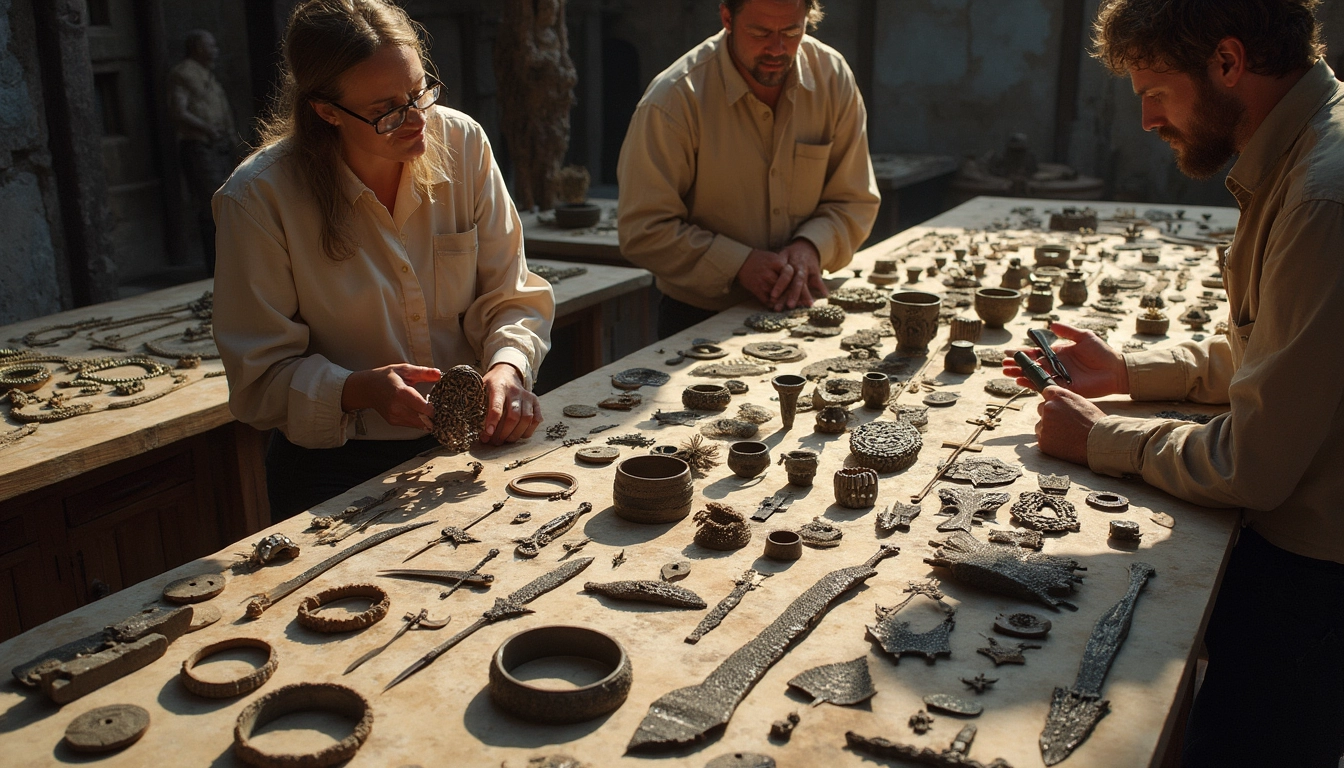
Ancient Polish Burial Sites Reveal Rare Meteoric Iron Artifacts Discovery
A groundbreaking archaeological discovery in southern Poland has revealed 2700-year-old iron artifacts containing rare meteoric iron at two Iron Age burial sites near Częstochowa. The collection of 26 artifacts, including bracelets, ankle rings, and weapons, represents one of the largest assemblages of meteoritic iron objects found at a single archaeological location, rivaling discoveries from ancient Egyptian sites.
Table of Contents
Key Takeaways:
- Archaeologists discovered four meteoric iron artifacts among 26 Iron Age objects in Poland
- The artifacts were crafted from an extremely rare ataxite meteorite with high nickel content
- The collection dates back to the Lusatian Culture period (750-600 BCE)
- Advanced analysis techniques revealed unique internal structures and composition patterns
- The findings provide crucial insights into ancient metallurgical practices and cultural values
Revolutionary Discovery in Polish Iron Age Sites
The excavation at two burial sites near Częstochowa has produced an extraordinary collection of ancient metalwork. The artifacts, belonging to the Lusatian Culture, showcase remarkable craftsmanship and technological sophistication. This discovery connects to broader research in space materials, similar to recent advances in controlling magnetic states through modern technology.

Scientific Analysis and Composition
Using cutting-edge analytical methods, researchers identified the artifacts as containing meteoric iron from an ataxite meteorite. The investigation employed portable X-ray fluorescence, Scanning Electron Microscopy, and X-ray microtomography to reveal unique banding patterns. These findings complement our understanding of cosmic materials, much like NASA’s ongoing exploration initiatives.
Historical Value and Cultural Significance
During the Bronze Age, iron was considered more precious than gold, but its value shifted dramatically in the Iron Age. The distribution of these artifacts across graves of different social standings suggests a complex cultural relationship with meteoric iron. For those interested in modern applications of such discoveries, automation tools like Latenode help researchers process and analyze archaeological data more efficiently.
Research Implications and Future Studies
This discovery has significant implications for understanding early metallurgical practices. The research aligns with contemporary space research efforts, showing how ancient civilizations utilized cosmic materials. The study of these artifacts continues to provide valuable insights into technological advancement and cultural practices of Iron Age societies.


